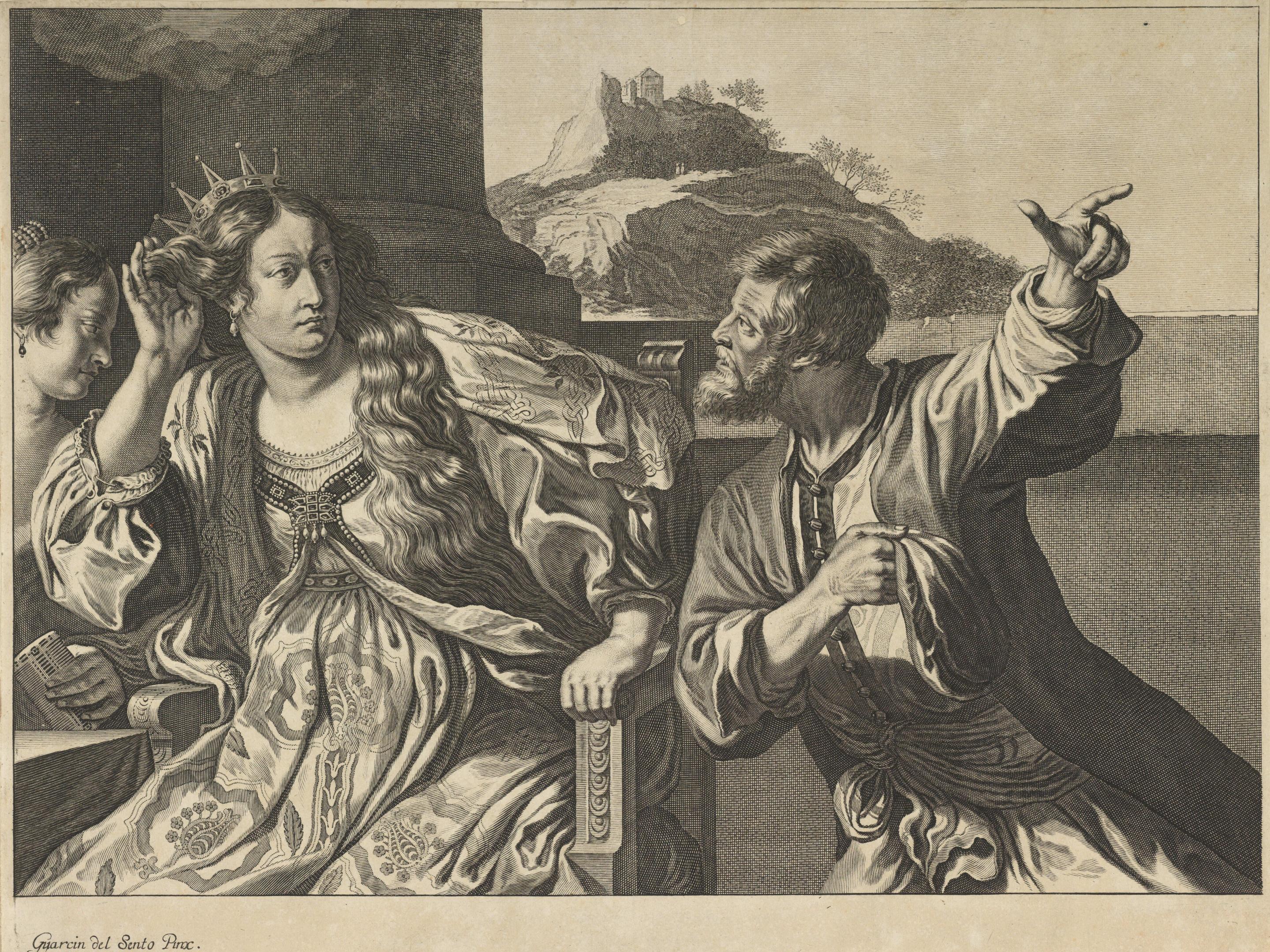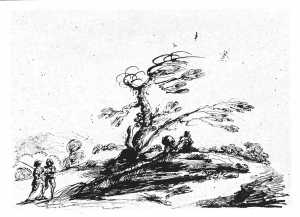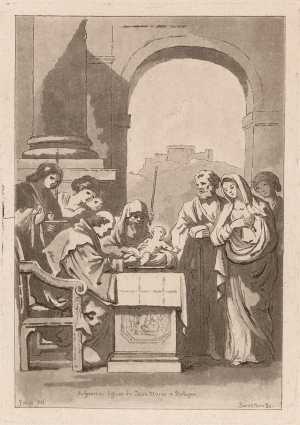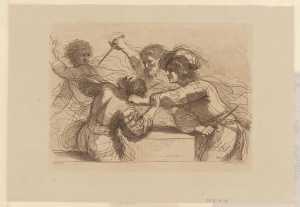Guercino is a nickname that means something like 'the cross-eyed'; his real name was Francesco Barbieri. In 1621, he worked for Pope Gregory XV. His ceiling decoration for the Casino Ludovisi is among the finest examples of illusionary works of the baroque. After the pope's death, Guercino returned to Cento and started his own studio. After the death of his competitor Guido Reni in 1642, whom Guercino had accused of stealing his ideas, he took over his studio in Bologna. The accounts for 1629 to 1666 have survived, and in them you can find accurate details about commissions, transactions and annual balances of the artist.

Guercino (Francesco Barbieri)
Cento 1591 - Bologna 1666
















